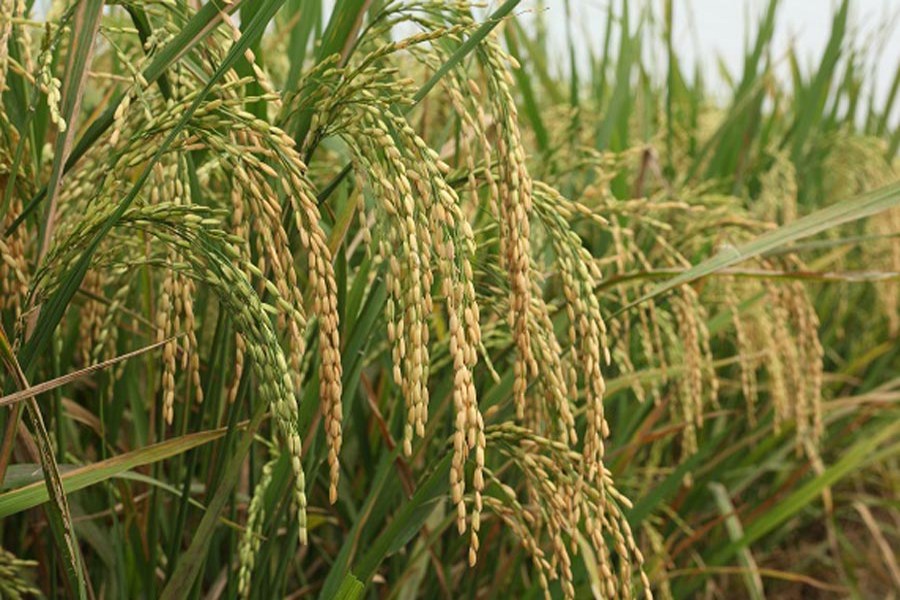Bangladesh is seeking to cope with climate change by employing nuclear technology not only for power generation but also for protecting its agriculture against flood and salinity. The low-lying delta region of Bangladesh is one of the most fragile ecosystems in the world and stands to be adversely affected by climate change. Around 27 million people will be at risk by 2050 owing to the climate change. Bangladesh has joined hands with the International Atomic Energy Agency (IAEA) and Food and Agriculture Organisation (FAO) of the United Nations (FAO) to develop climate change-resilient crop varieties to feed its growing population.
"We are in constant fight. We fight salinity in our soil, extreme temperatures, drought and floods," Mirza Mofazzal Islam, chief scientific officer and head of the Plant Breeding Division at the Bangladesh Institute of Nuclear Agriculture (BINA) was quoted in a news report by the IAEA Office of Public Information and Communication. "But, for all these problems, we have a solution-at least as far as crops are concerned."
Mofazzal Islam has said that the government of Bangladesh is afraid of rising sea levels increasing the soil salinity that can in turn threaten agriculture in the country. The scientists at BINA have developed radiation-induced plant varieties that can withstand varied climate conditions. These varieties have helped Bangladeshi farmers to increase rice production three-fold, contributing to their food security.
The IAEA news report goes on to add that more than 60 plant varieties offered by the scientists to farmers today have been developed through a process called plant mutation breeding. These varieties of rice, lentils, chickpeas, peanuts, mustard, sesame, soybean, jute, tomato and wheat have "become popular across Bangladesh", accounting for about 8.0 per cent of its crops.
"Irradiation can be used to induce mutations in plants to produce varieties that display improved product quality, have higher yields and yield stability, greater resilience to climate change and tolerance to environmental stresses," said Ljupcho Jankuloski, plant breeder and geneticist at the Joint FAO/IAEA Division of Nuclear Techniques in Food and Agriculture. "The rice mutant varieties developed at BINA have helped Bangladesh increase its rice production in the last few decades."
The Joint FAO/IAEA Division has been training scientists at BINA since the 1970s setting the stage for development of improved varieties with climate-resilient traits. "It is especially now in the face of increasingly extreme weather conditions and the need for more yields that nuclear science and technology in agriculture has become indispensable," said Syahril Syahril, project manager at the IAEA responsible for technical cooperation with Bangladesh.
One new mutant rice variety needs less time to grow while producing more rice in comparison to local conventional varieties. Another, resistant to salinity, is being deployed near the Bengal Bay, a one-million hectare spread of saline soil that was earlier unfit for agriculture.
Scientists have also developed rice varieties that can do better in flood-prone areas. Generally crops can survive only for three to four days when submerged in water. But, the new rice varieties can live underwater for more than three weeks.
Plant mutation is a technique that has been applied since the 1930s. The process entails exposing plant seeds or plant explants to radiation, such as gamma rays or X-rays, and then planting the seeds or cultivating the plant in a sterile medium, which generates a sapling. The individual plants are then screened (or phenotyped) for their traits. Individual plants with improved agronomic traits are selected and multiplied. Molecular marker-assisted breeding, often referred to as marker-assisted selection, is used to accelerate the selection of plants with desired traits, carried by genes of interest. By using radiation, scientists significantly shorten the time taken to breed new and improved plant varieties.
Bangladesh has been a new entrant in the field of nuclear power as the construction of its first nuclear power plant at Rooppur began in November 2017. The first unit is expected to be commissioned in 2023. The First Concrete Pour for the second unit was done in July 2018 and the commissioning is expected to be in 2024.
Equipped with Russian VVER-1200 reactors, the Rooppur Nuclear Power Plant is expected to reduce the country's dependence on natural gas and other non-renewable resources of energy. This is a major step undertaken by Bangladesh towards clean energy and counter climate change. The Rooppur Nuclear Power Plant is a turnkey project where Russian firm Rosatom will fully design and construct; and would then turn the project over to the BAEC after first year of operation. Buoyed by the success of the Rooppur Nuclear Power Plant, Bangladesh has already started scouting for a site for its second nuclear power plant.
Ritu Sharma is Editor, www.nuclearasia.com
Email: [email protected]


